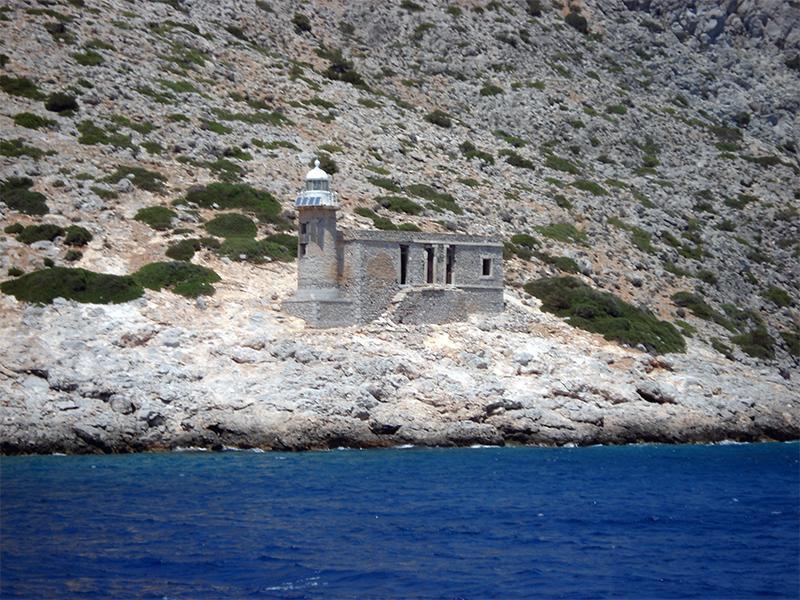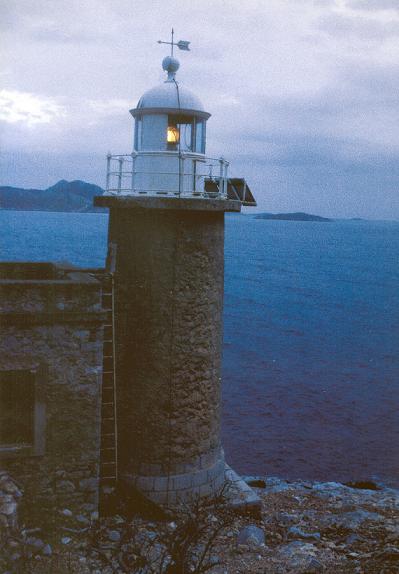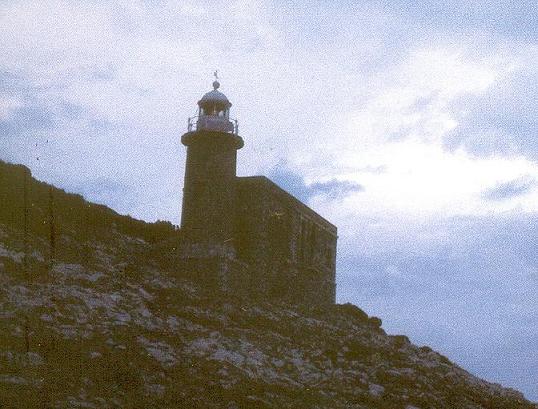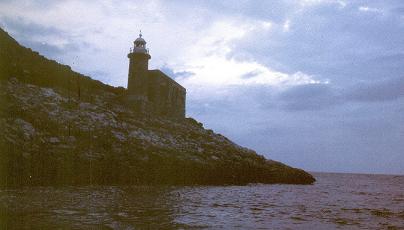LIGHTHOUSE DOKOS
LIGHTHOUSE DOKOS |
||||

This lighthouse was manufactured in 1923. The altitude of tower is 9 metres and the height of focal plane is 23 metres. The access in the lighthouse becomes with boat from Spetses Island. The islet of Dokos, Hydra IslandDokos (meaning "beam" in Greek) is a small islet in the Saronicos - Argolicos bay, situated between Hydra and the opposite coast of Ermioni at the Peloponnese, close enough to Spetses. The island is mountainous and pretty rocky, with the higher altitude to reach the 308 meters. It is a barren island with scarce water sources. Today it counts some 50 permanent residents occupied in stockbreeding and fishing, but it receives many visitors, mainly naturists who come here to enjoy free camping at the northern coasts of the island, or to visit the women's monastery of Aghia Eupraxia. According to the archaeological finds, the island seems to have been populated as early as in the late 5th millennium b.C. (Late Neolithic period), but it flourished a bit later, during the Early Helladic period in the 3rd millennium b.C., thanks to the rapid development of navigation. During the Mycenaean times there had been established and developed the settlements at the sites of "Ledeza" and "Kommeni Myte". From the Archaic times and throughout antiquity the island was called Aperopia. Throughout its history the island was a strategic point of great importance, a fact well confirmed by the ruins of the Byzantine castle which was also used and extended by the Venetian. The location of the island allowed to whoever dominated it to control the marine transports of the Argolicos bay up to Eastern Laconia. During the Greek Revolution of 1821 the fleet of Hydra used the islet as a safe port for winter. In 1970s' it has been found in the area around Dokos the most ancient shipwreck of the world, dated in the second half of the third millennium b.C. The Ship-wreck of Dokos In the summer of 1975 Peter Throckmorton, a diver, investigator of sea bottoms has detected a great number of pottery at a depth of 20 m. at the sea bottom around the island of Dokos. Soon afterwards Throckmorton, having communicated the information to the Greek Archaeological Service, returned to the island accompanied by the Greek archaeologist Georgios Papathanasopoulos, who examined the pottery, dated it in the Early Helladic period and suggested that it was a ship-wreck probably of 2200 b.C. Soon after, in 1975 and 1977, they carried out two investigating surveys, which resulted to a more accurate dating: the ship-wreck could be located in the Early Helladic II period (2700-2200/2100 b.C.) During the same survey, they had defined the area of the ship-wreck, at a depth of 15 to 30 meters and found out that it was the more ancient ship-wreck ever since found worldwide. A systematic excavation of the site started in the summer of 1989 by the Institute of Marine Archaeological Surveys of Greece, under the supervision of the archaeologist Georgios Papathanasopoulos. The underwater excavation would take place every summer and last two months. The whole process was completed in 1992 and the finds were kept in a special space of the Museum of Spetses, where they are being restored by experts. The pottery refloated from the sea bottom constituted the ship-load of a merchant ship and would be delivered to an unknown destination. The pottery of the ship evidences for the high level of the technology of the period. There have been found vessels of various kinds, along with objects of every day use which resemble to those already found in the excavations of the strong coastal Early Helladic settlements of Lerna and of Tiryns, as well as in other settlements of the broader Argolida. The underwater archaeological survey at Dokos was the first systematic underwater excavation of an ancient ship-wreck in Greece and had been carried out with the use of the most up-to-date technology and equipment. This marine find constitutes one of the most valuable evidence for prehistoric navigation and the development of marine trade. It also offered extremely important information about the level of technology during the Bronze Age and about the economy and exchange in the Aegean in late 3rd millennium b.C. The survey of the ship-wreck has added up a lot to the land surveys of the Early Helladic culture and made scholars understand better how the marine transports and the communication process in the Myrtoon Sea and in the Saronicos Bay. |
 |
  |
|
|
Copyright © 2000-2017 | All rights reserved | Disclaimer |  |